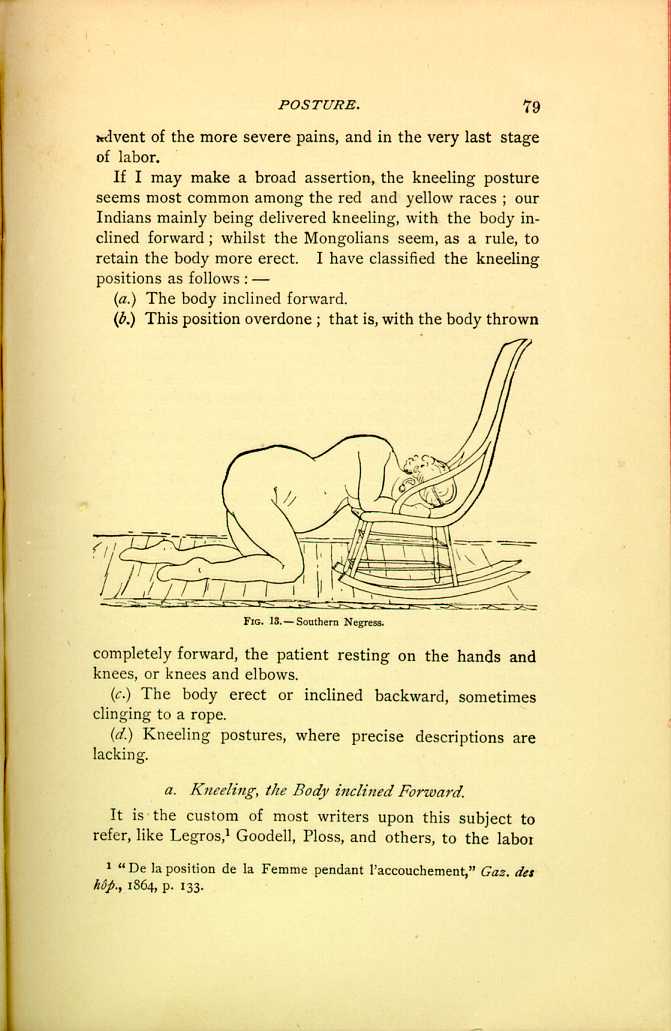| CHAPTER II.
POSTURE IN LABOR. Labor Among Primitive Peoples | ||
The kneeling posture, like some other positions which appear to us peculiar, is a historical one. It is referred to in the Bible, as well as by the Roman poets. It was taught in ancient Rome, among the Arabs, and in Germany during the Middle Ages, and definite rules were laid down for the circumstances under which it should be resorted to. At this present day it is still, at times, adopted in the rural districts of our own States, and more frequently than we should suppose in our cities. It is that position which is, perhaps, most universal among our Indians, that is, among what we may call the blanket Indians, those who have not yet partially succumbed to the advances of eastern civilization. Some of our ablest obstetricians, Fellows of this Society, who have given me their opinions upon the kneeling posture in labor, differ in their views in regard to its advantages and disadvantages; to one it seems physiologically correct, and appears most practically to favor the expulsion of the child, whilst it is frowned upon by another as liable to be followed by hemorrhage. We, however, do not hear of this as a frequent occurrence among the Indians, where the position is so common; in fact, we neither hear of this nor any other accident consequent upon labor, not even of prolapse, which might be supposed to follow; probably, because the position is only assumed during the
If I may make a broad assertion, the kneeling posture seems most common among the red and yellow races; our Indians mainly being delivered kneeling, with the body inclined forward; whilst the Mongolians seem, as a rule, to retain the body more erect. I have classified the kneeling positions as follows:—
(a.) The body inclined forward.
(b.) This position overdone; that is, with the body thrown

FIG. 13.—Southern Negress.
[Description: Pregnant woman kneels on the floor,
her face and arms resting in the seat of
a rocking chair. Black and white illustration.]
(c.) The body erect or inclined backward, sometimes clinging to a rope.
(d.) Kneeling postures, where precise descriptions are lacking.
| CHAPTER II.
POSTURE IN LABOR. Labor Among Primitive Peoples | ||